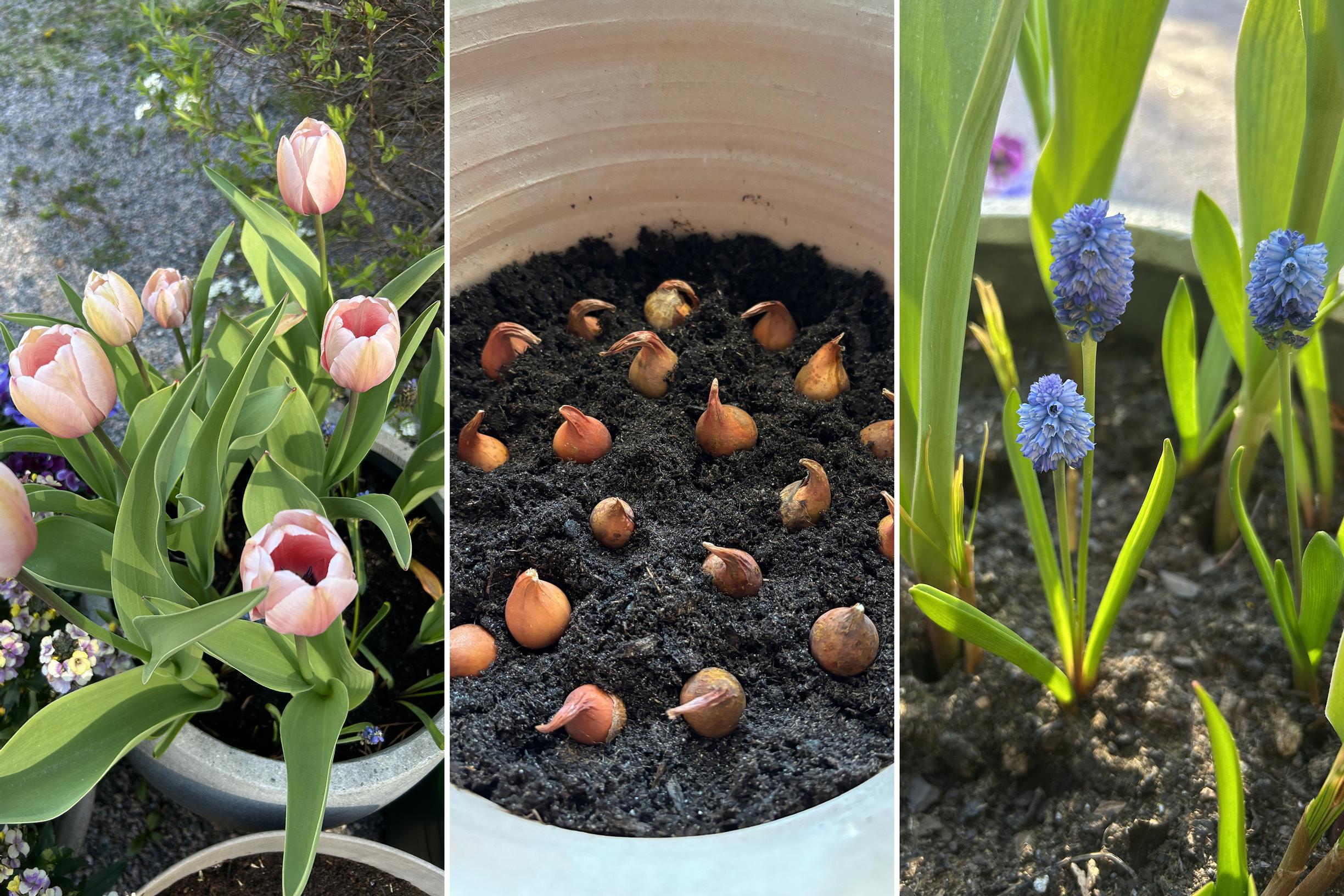
Outdoors, balcony, or storage: we tested three ways to overwinter bulb flowers in pots—here’s what happened
We wondered whether bulb flowers could thrive in a pot, even without a spot that stays above freezing. We also wanted to find out whether bulbs kept indoors might bloom earlier than those left outdoors (assuming they would survive winter). Some of the results surprised us!
1. A four-bulb lasagna planting
The chosen varieties were saffron crocus “Romance,” grape hyacinth, the lilac tulip “Lilac Wonder,” and the Darwin hybrid tulip “Salmon Impression.” The idea was to make a layered “lasagna” planting, where crocuses and grape hyacinths would flower fairly early in spring, followed by the more delicate lilac tulips and the bigger Darwin hybrids.
All three gardeners in the Helsinki metropolitan area planted their bulbs after mid-November. In the bottom layer, they placed the largest bulbs (the Darwin hybrids); in the middle layer, the mid-sized lilac tulips; and at the top, they tucked the grape hyacinths and crocuses. About five centimeters of soil covered the smallest bulbs.
The pots weren’t identical, but each gardener used a fairly large container. The planting was watered lightly (enough to moisten, not soak).

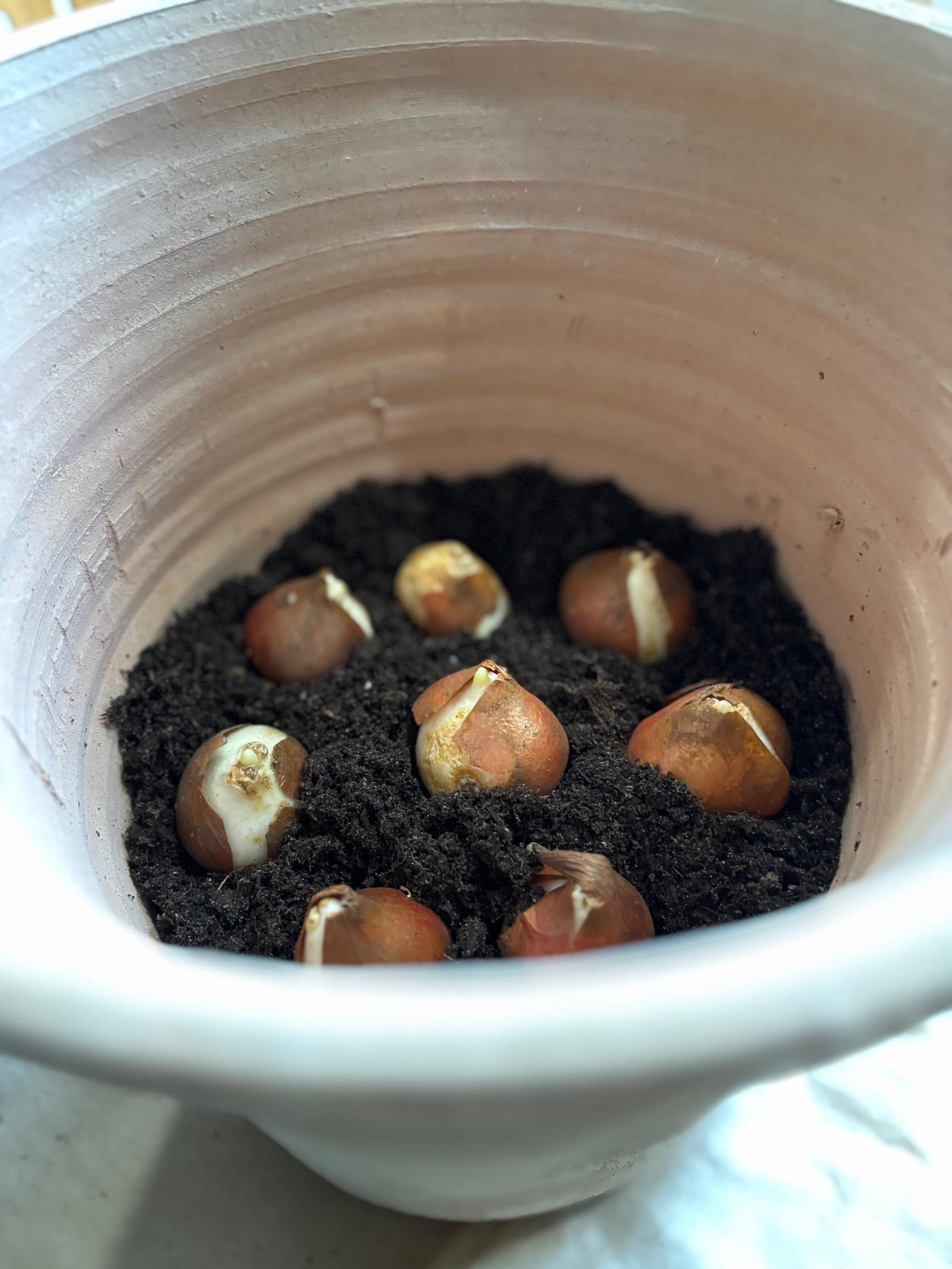

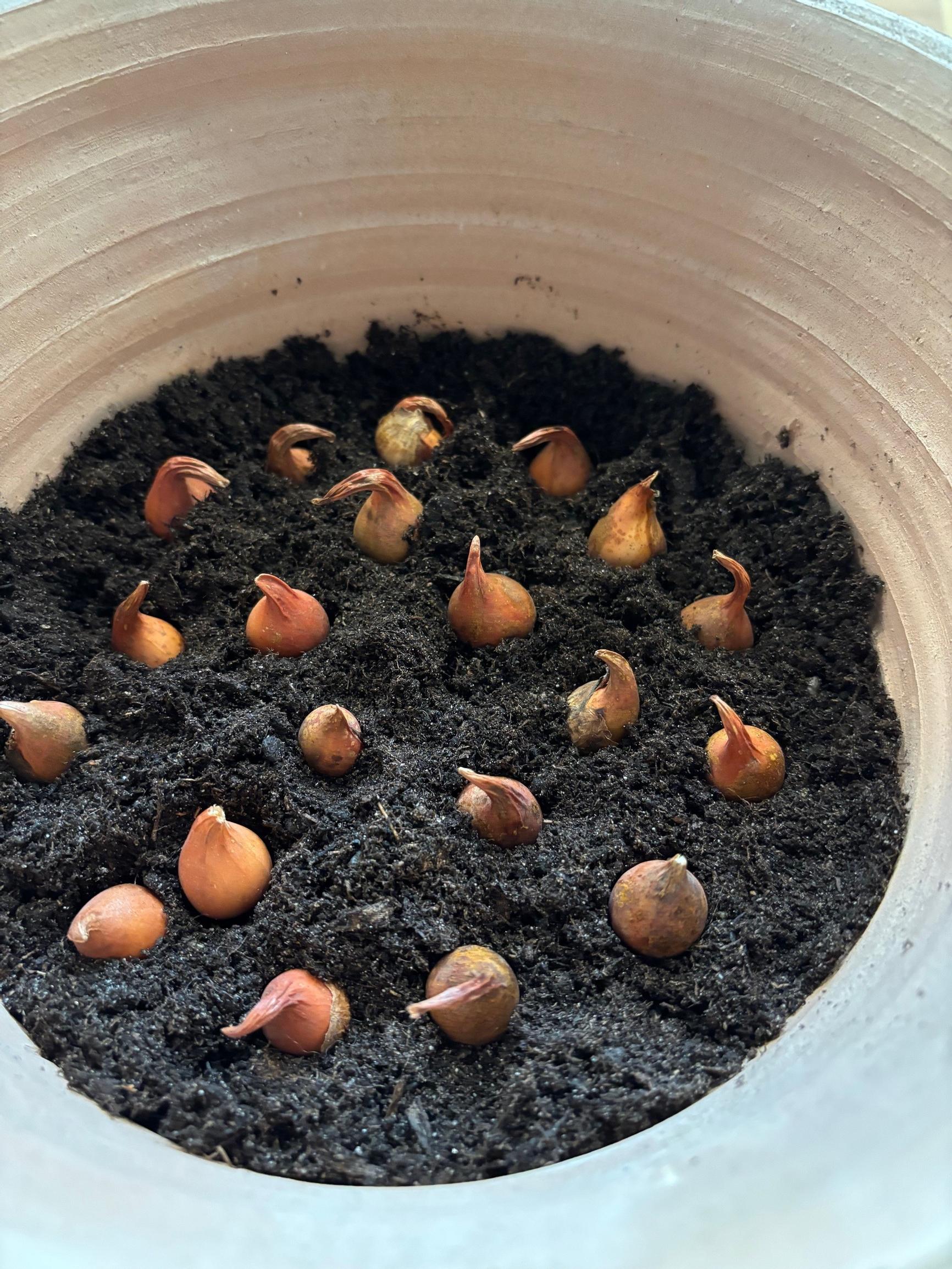

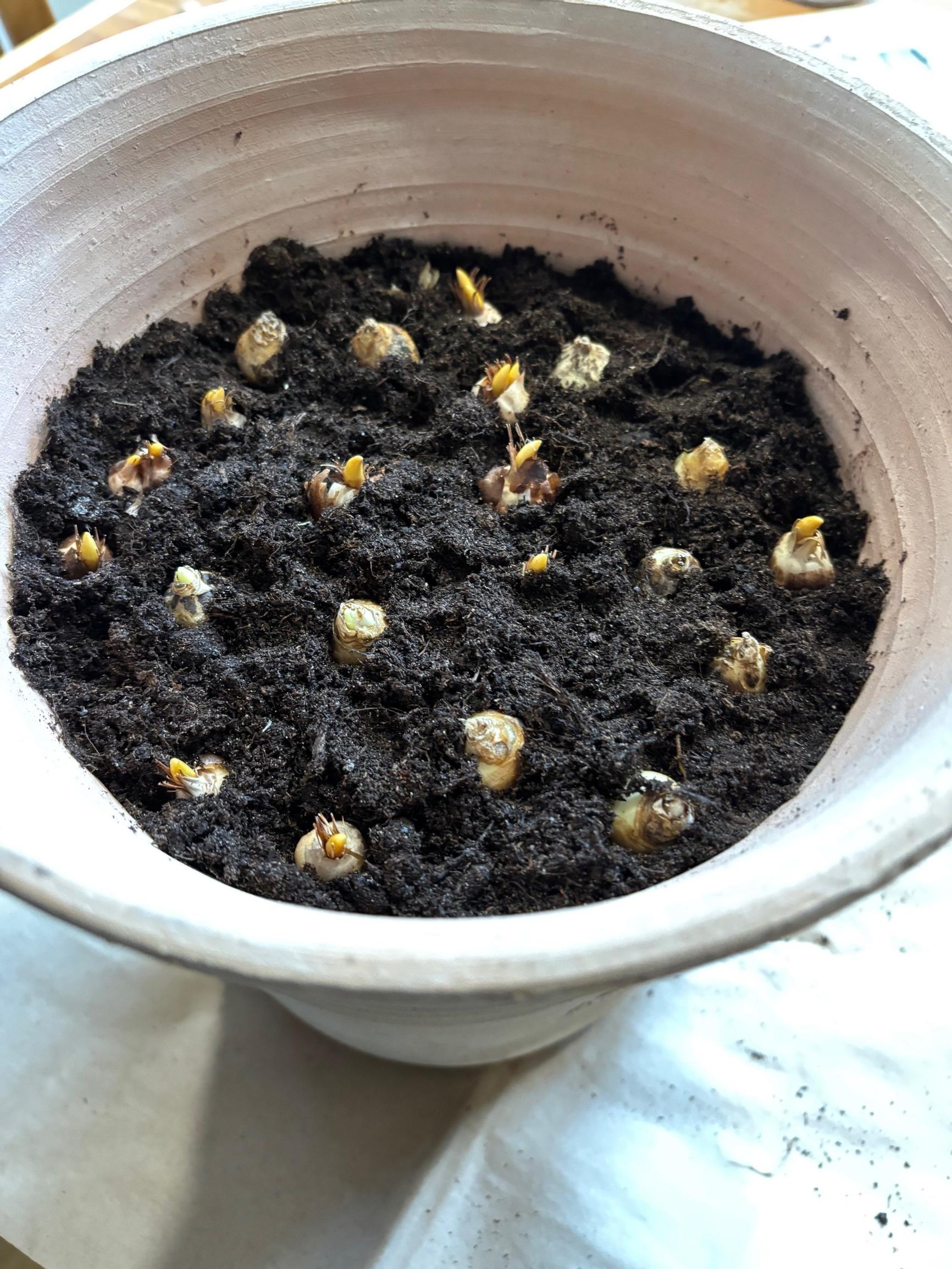
2. The pots were stored in different ways
One of the pots was moved into a dark storage area, where the temperature stayed about 3–5 degrees Celsius (37–41°F) through winter, thanks to a heater. The soil surface stayed fairly moist for some time. Water was given sparingly in late January and once more in February.
Another pot was on a glazed balcony, which faces west. The sun warms and lights the balcony for part of the day. The pot received only a little water at planting and then one or two follow-up waterings.
The third pot was kept outdoors against the house wall. Because excess moisture is hard on bulbs, this frost-proof container stayed on a covered terrace. It wasn’t watered all winter and was covered with mesh to keep animals away. The winter of 2024–2025 was mild, but during the coldest spell, the pot got covered with a coat.
3. Things started happening in spring
In the pot kept in storage the first shoots emerged at the end of February. By mid-March, there was abundant growth, though it was pale from the darkness. Because it was warm outside, the pot was moved to a sheltered spot outdoors. When freezing weather hit, the pot was covered with thick frost cloth. The bulbs weren’t bothered by the cold, though growth paused.

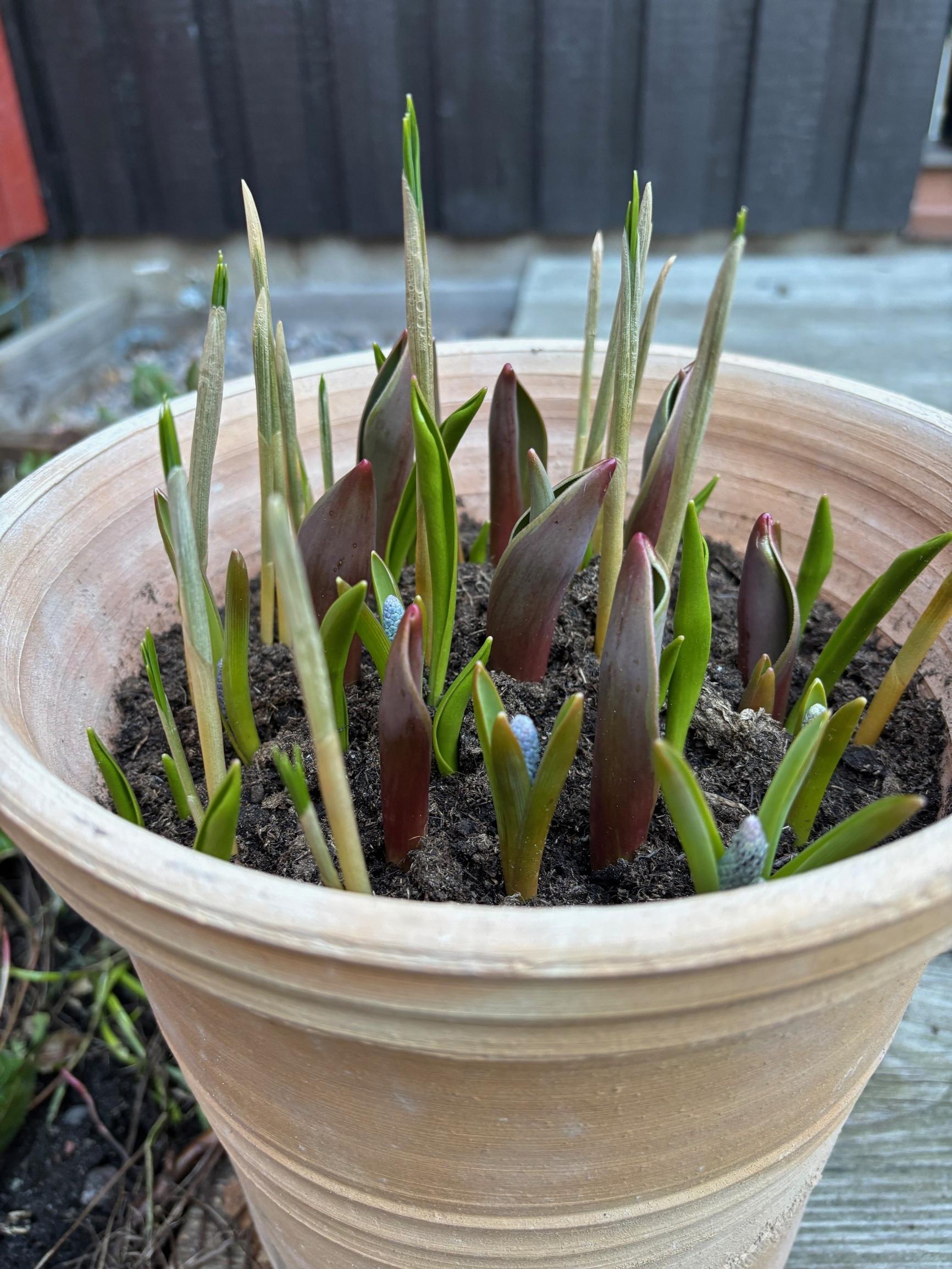
On the glazed balcony pot, tiny shoots appeared by mid-March.


Outdoors against the house wall pot was moving at about the same pace or even a bit ahead of the balcony pot. The shoots were clearly visible on March 19, 2025.

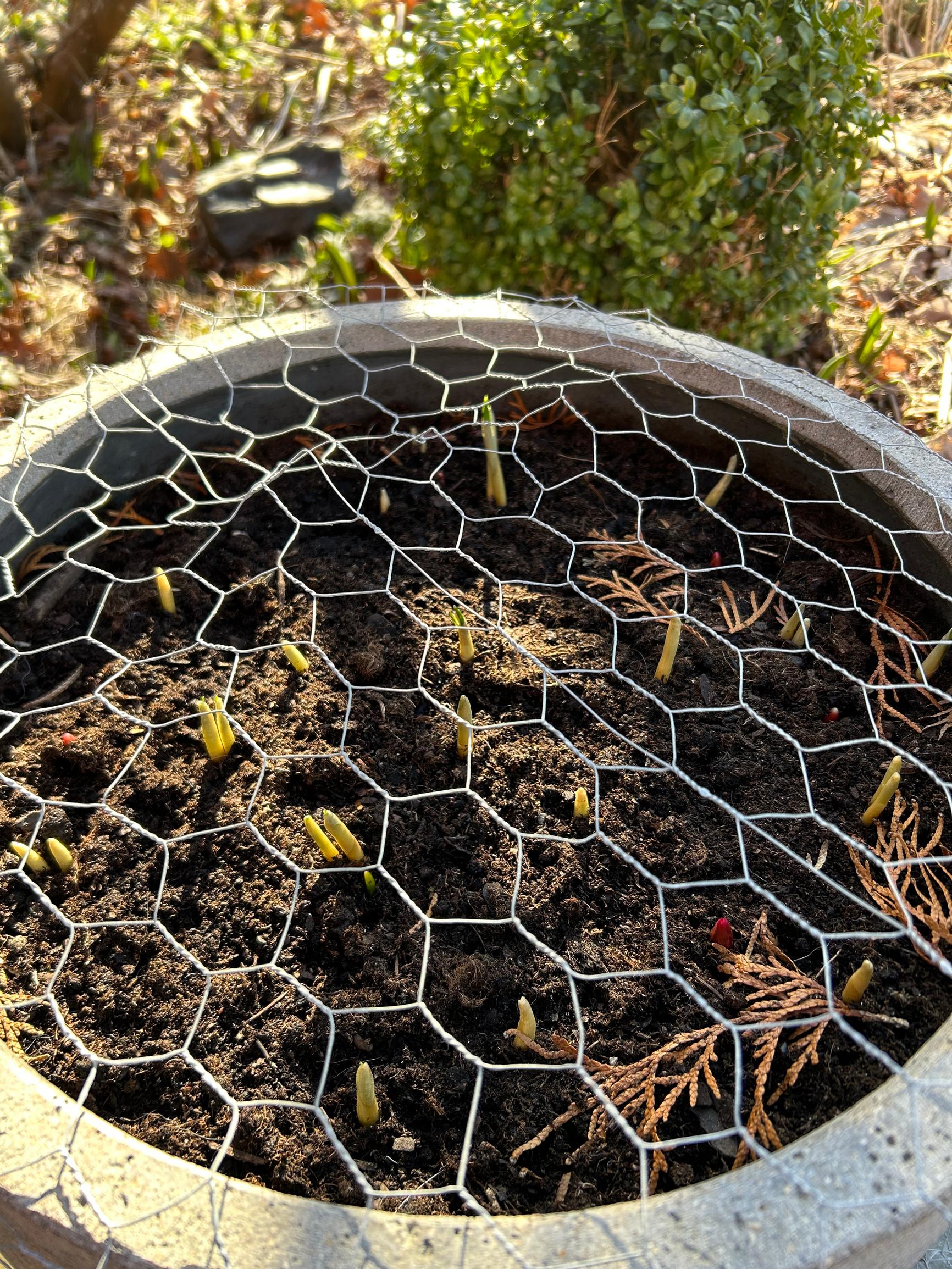
4. Now it’s blooming—or maybe not
In the pot that wintered in storage the grape hyacinths began forming flower buds in mid-March, and crocuses unfurled their flower stalks above them. Crocuses opened at the end of March. The tulips, though, took longer. At last, in mid-May, the lilac tulips came into bloom—around the same time as those in the garden beds. The bottom-layer Darwin hybrids produced hearty leaves but never bloomed.

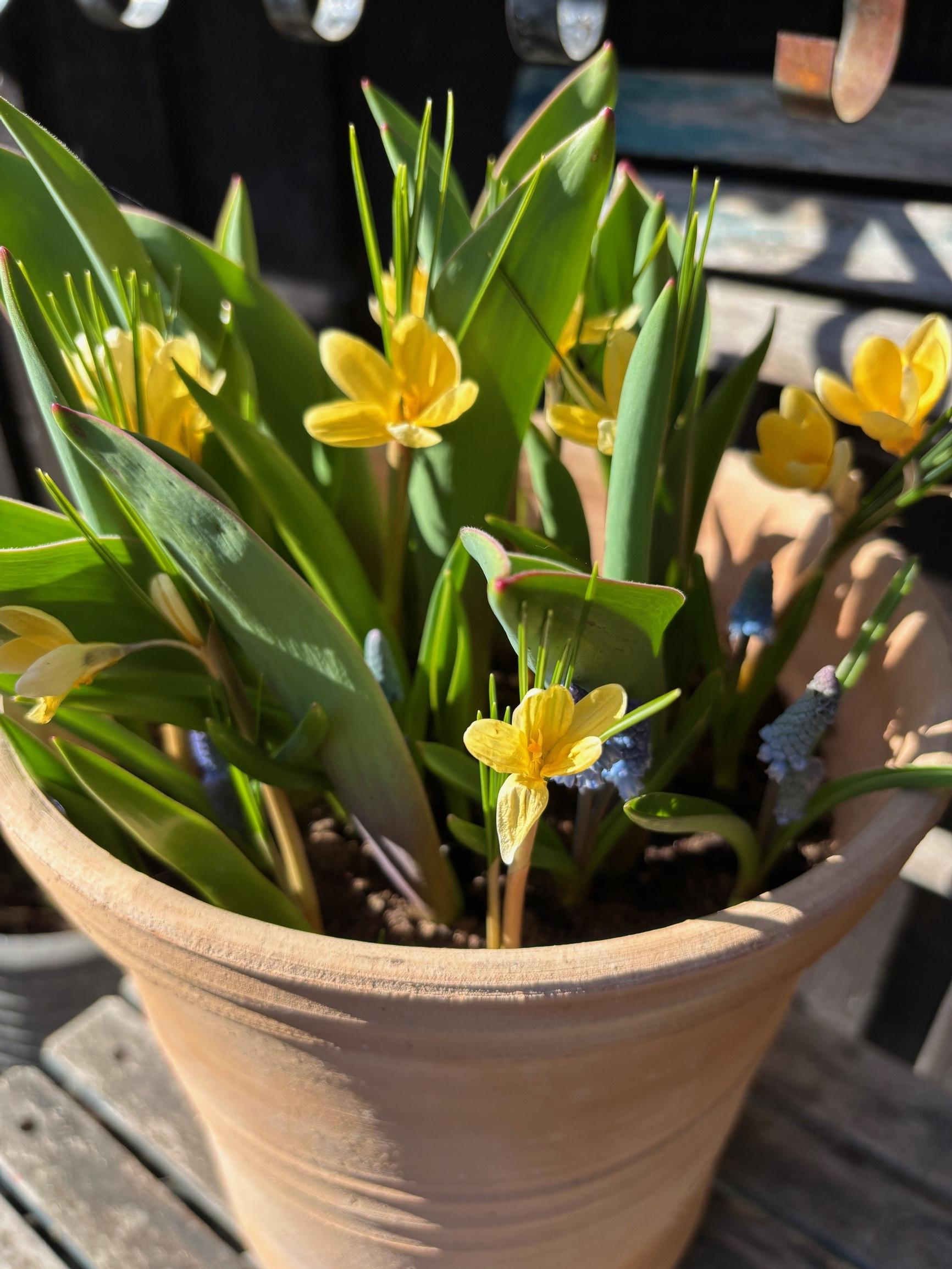

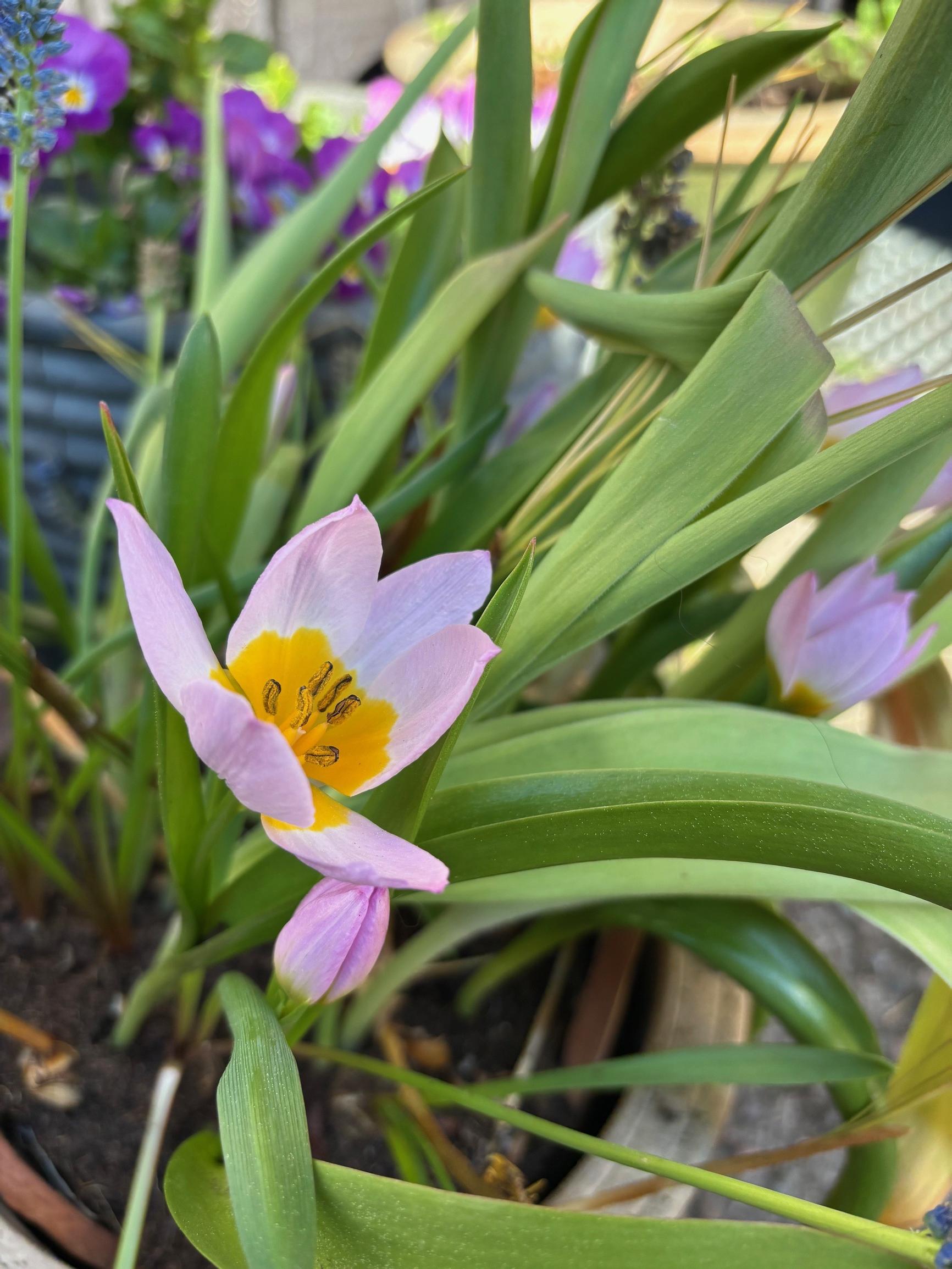
In the balcony pot the first sign of spring arrived in early April, when grape hyacinths and crocuses opened their buds. After that, the tulip leaves covered the smaller bulbs below. Several lilac tulips bloomed, but only one of the larger Darwin hybrids produced a flower.

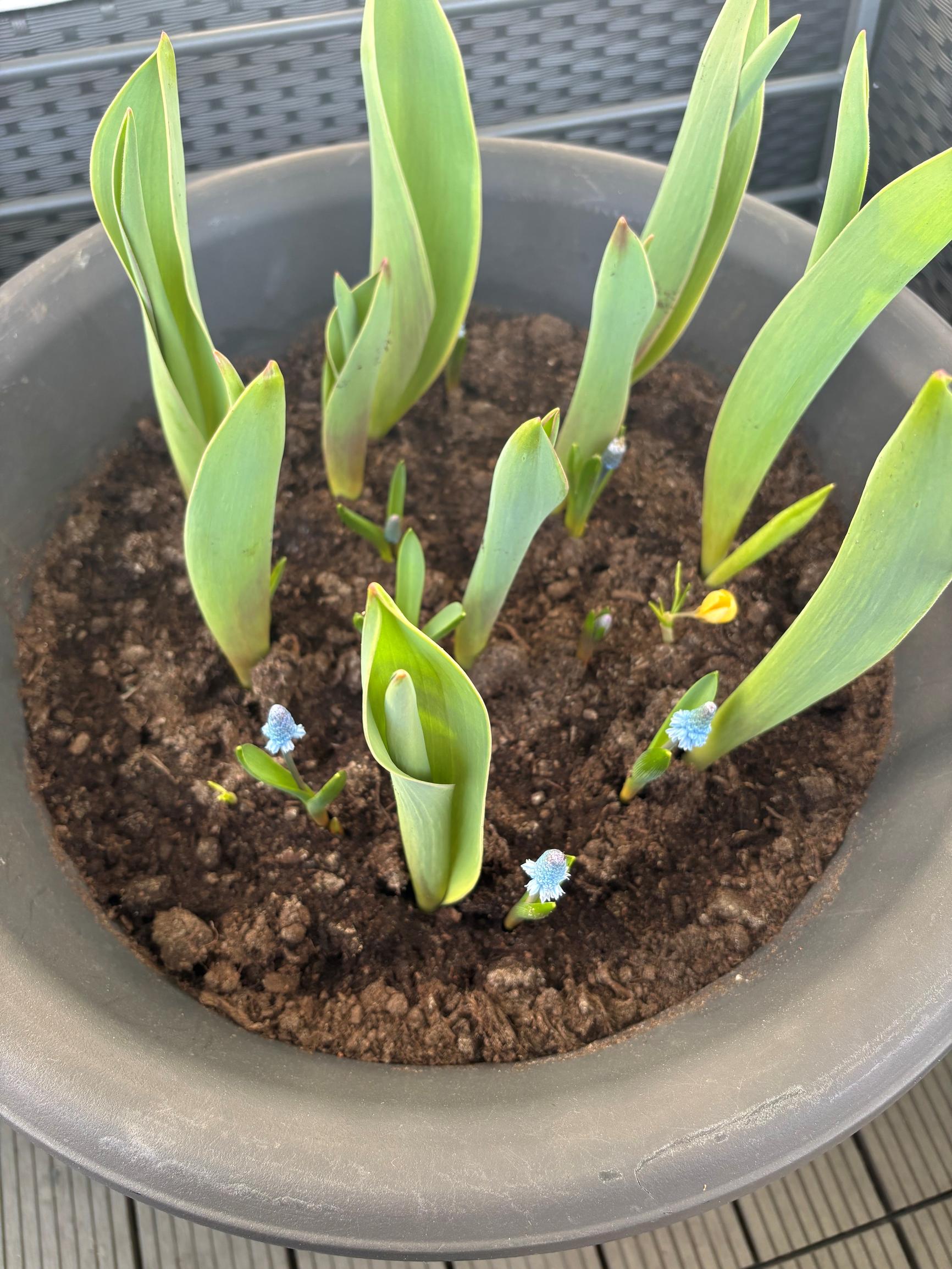

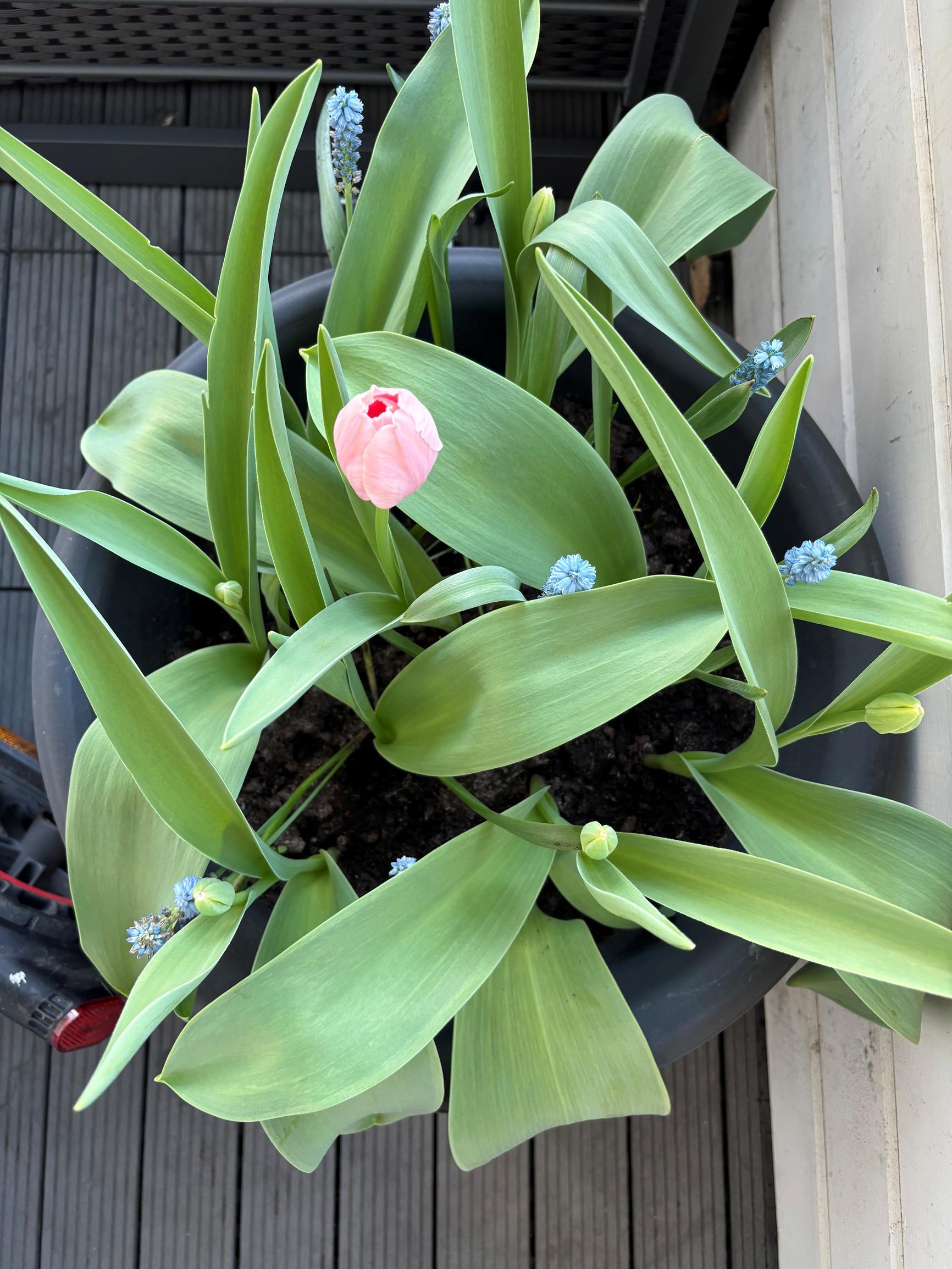
In the pot that spent winter outdoors, only a few crocuses flowered. Grape hyacinths opened around mid-April, but the middle-layer lilac tulips were nowhere to be seen. Instead, the Darwin hybrids bloomed beautifully in this pot, though somewhat late. In the same garden, some tulips planted in the ground had already finished blooming.

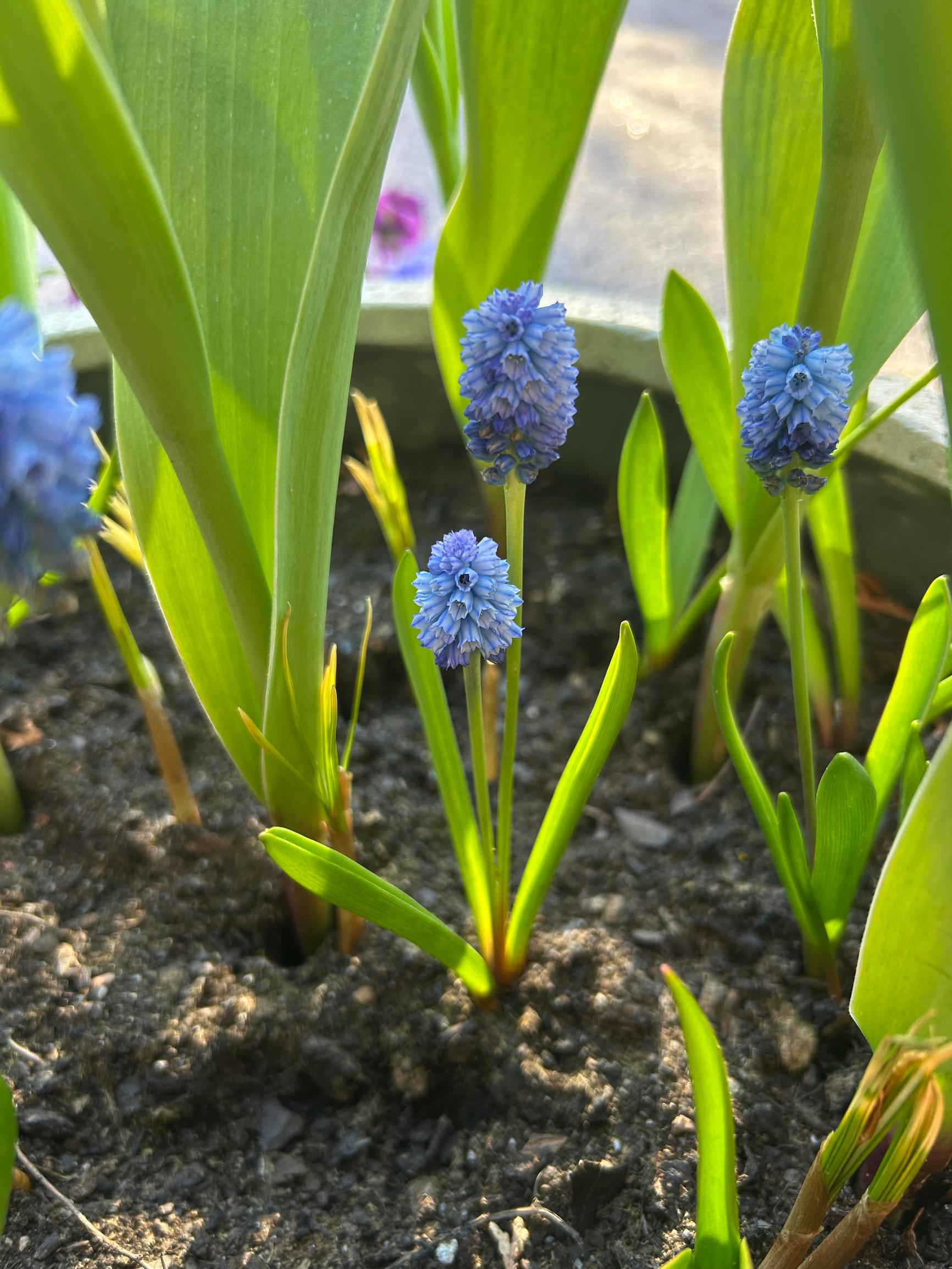

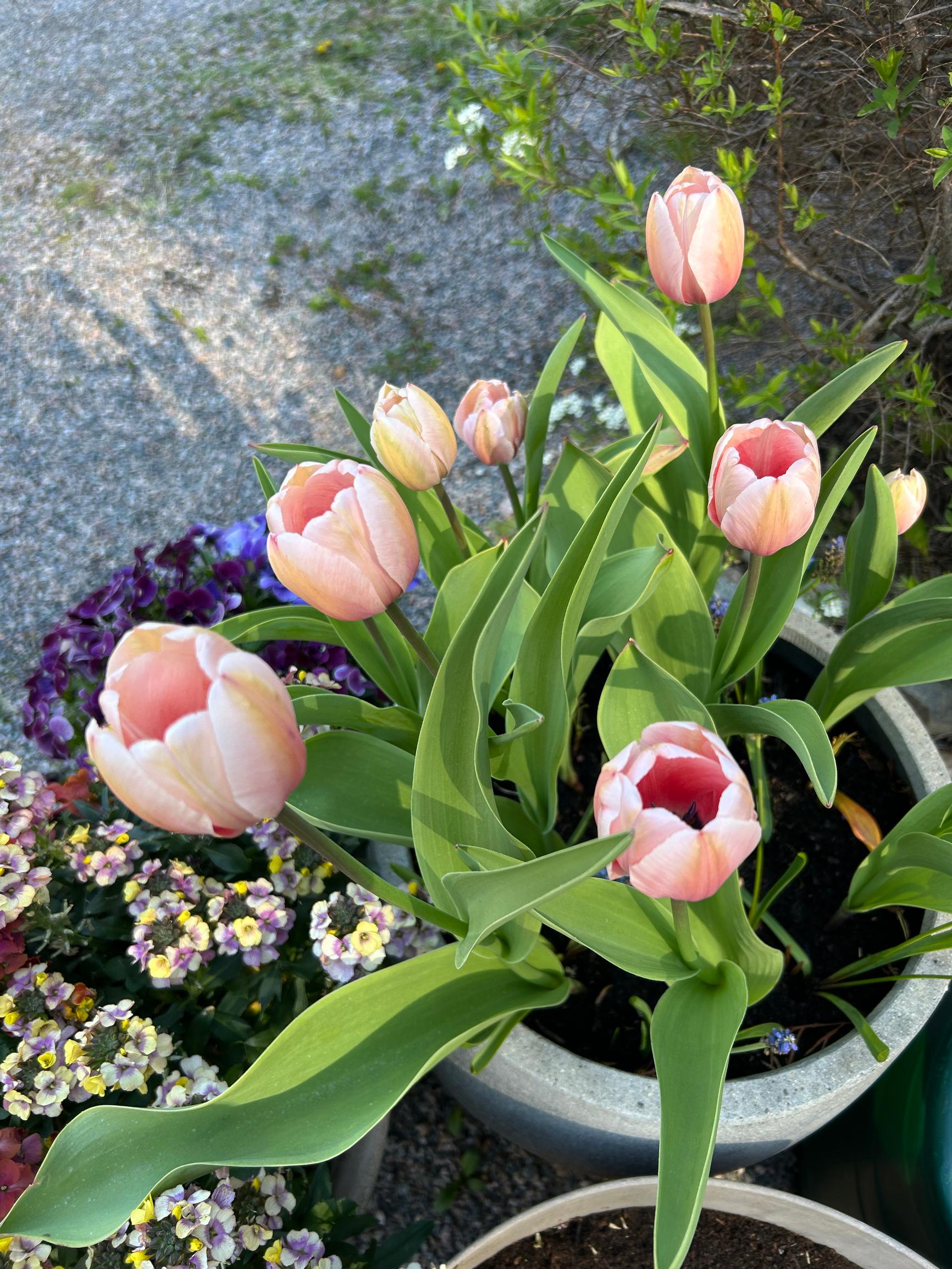
What we learned
- We thought the storage pot would yield the best results. Surprisingly, the Darwin hybrids it held never bloomed, and the other bulbs didn’t flower much earlier than those on the balcony. It’s hard to say why the Darwin hybrids failed to bloom. One possibility is pot size: the pot that stayed outdoors, where the hybrids thrived, was ten centimeters (3.9″) deeper than the storage pot. A deeper container also means more soil under the bottom bulbs.
- All three pots seemed a bit sparse. We could have stuffed a lot more small bulbs—like grape hyacinths and crocuses—into them.
- We noticed that if a storage option is available, it might be better to plant bulbs later, around Christmas, so they don’t start growing too soon indoors.
- Be picky about which species and varieties go into your containers if you want them to delight you while the rest of your garden is still asleep. In this test, we picked bulbs fairly randomly, and they didn’t bloom earlier than ones planted in the ground (apart from the saffron crocuses). Early small bulbs—like striped squill, iris reticulata, and crocuses—and early tulip varieties, like the botanical tulip “Ice Stick,” might make great pot choices.
- It was reassuring to see that at least in southern Finland, you can grow bulb flowers in pots even if you don’t have a cellar, garage, or other areas that stay above freezing. Of course, a mild winter offers better odds than a harsh one.
- Raising bulb flowers in pots is always something of an experiment: you can’t be absolutely sure which ones will bloom and which won’t, but following their progress is part of the fun.


